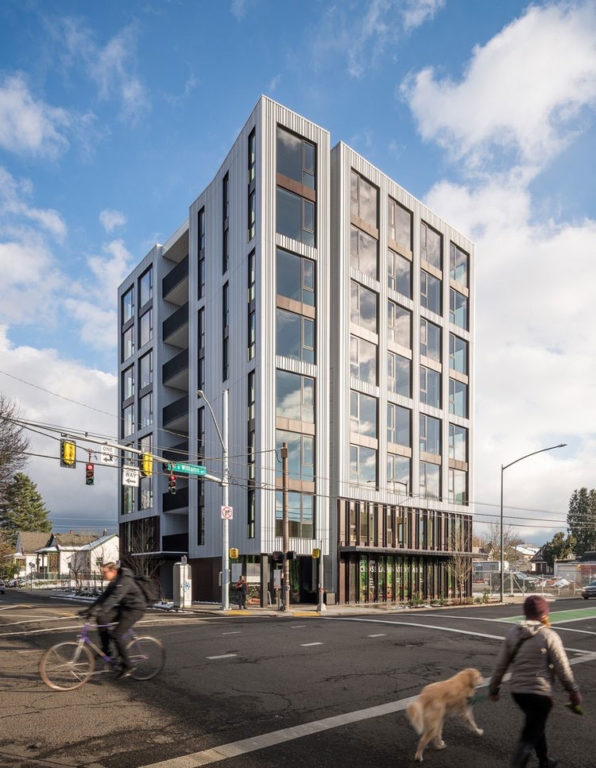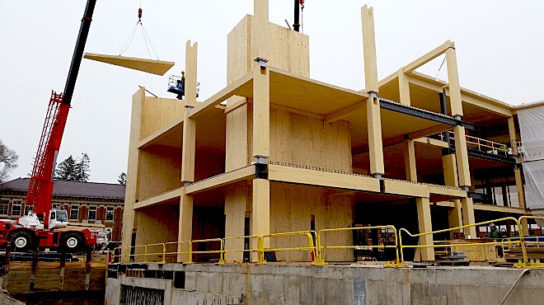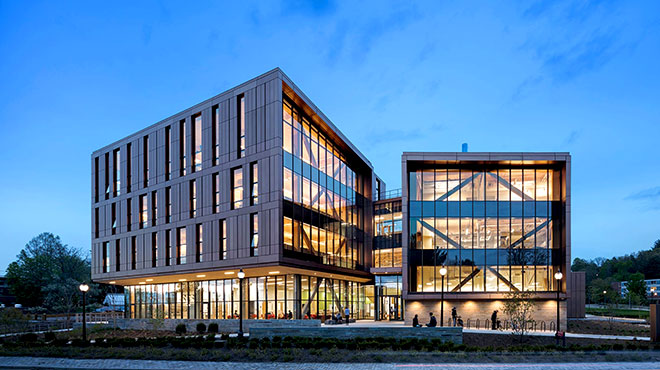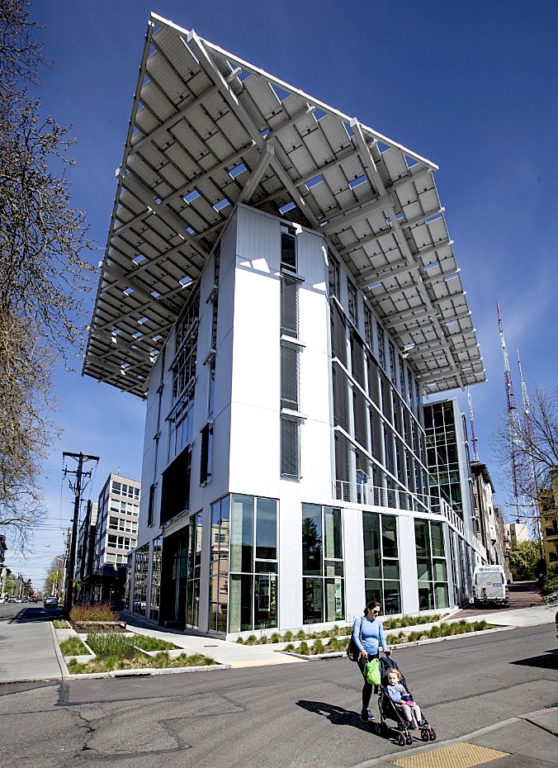Rick Alfandre, AIA, LEED AP BD+C, President of Alfandre Architecture, PC
This is a condensed version of an article originally appearing on the website of Alfandre Architecture.
While many of us have built structures with heavy timber, Mass Timber takes building with wood to new heights — literally. This relatively new system for building is probably coming to our marketplace soon and can revolutionize how America builds. It is important for all commercial contractors to be aware of mass timber.
Mass timber is comprised of multiple solid wood panels glued or nailed together, which provides exceptional strength and stability. It is a strong, low-carbon alternative to concrete and steel.
Mass timber buildings use solid or engineered wood — such as glue-laminated timbers, cross-laminated timber panels, and mass plywood panels — for their primary load-bearing structure including beams, columns, floor plates, roof plates, and exterior wall panels.
Mass timber building designs are pioneering better places for us to live and work. New code changes that were passed for the 2021 code cycle allow mass timber buildings up to 18 stories tall.
Benefits of Mass Timber Building
A relatively new set of advanced building systems, mass timber developments offer many benefits when compared to buildings constructed with other load-bearing materials:
- They can be built on faster timelines.
- Savings on materials and labor.
- A high level of component quality.
- Great flexibility in the design of building components.
- They can improve sustainability by sequestering carbon dioxide.
- They can catalyze an entirely new market in the green economy.
- Improved safety for construction workers, residents, and commercial tenants.
- A unique aesthetic compared to other construction materials.
- Expose the structural systems easily and beautifully.
Wood stores and sequesters atmospheric carbon. It is truly an environmentally friendly, green building material.
Mass Timber Building Elements include Glue-Laminated Timber; Cross-Laminated Timber; Nail-Laminated Timber; and Dowel-Laminated Timber. Find descriptions of these materials in the extended version of this article on the Alfandre Architecture website.
Design Flexibility and Exposed Structure

Fire Safety
Mass timber chars in a major fire but does not burn, making it much more stable than unprotected steel in a fire.
Challenges associated with Mass Timber include a more front-loaded, manufacturing-oriented approach to integrated design that requires teams of architects, engineers, contractors, and manufacturers to work closely together, and at higher levels of detail resolution. Design/Build firms like EcoBuilders are ideally positioned for this work.
Construction Trends
Tall Wood
Buildings constructed of heavy glue-laminated timber columns and beams with cross-laminated (CLT) timber floors, walls, and roof decks are becoming more commonplace. With recent changes in building codes, and a quest to find more sustainable ways to build up, we are seeing a marked rise in the number of taller mass timber buildings popping up across the world.


Another example of a recent finished and regionally significant mass timber building is the 87,000 square foot John W. Oliver Design Building at the University of Massachusetts Amherst.


Hybrid Construction
Combining wood and concrete or steel in hybrid construction provides a cost-effective and sustainable solution for many occupancy types, while improving building performance and design.
Opened in 2015 with four stories of mass timber above two stories of reinforced concrete, the 52,000 square foot Bullitt Center in Seattle is an example of a hybrid building system.

Infill and Overbuilds
Infill refers to the development of vacant lots surrounded by other, existing buildings. Overbuilds is a technique to add additional stories on top of an existing building, maximizing development area per square foot.
Both building types address urban densification. Wood structural systems are much lighter than traditional building materials, making both techniques more feasible.
Conclusion
All professionals working in the building trades should become familiar with the concepts of mass timber construction. Mass Timber Construction Systems are becoming increasingly popular as a creative and cost-efficient way to build. Mass timber buildings are aesthetically pleasing, structurally innovative, and a great way to build sustainably.
This is a condensed version of an article originally appearing on the website of Alfandre Architecture.

